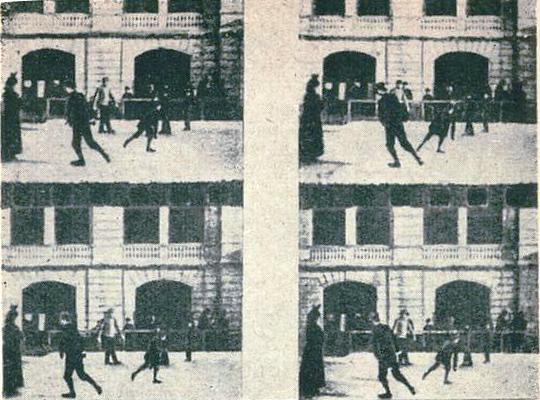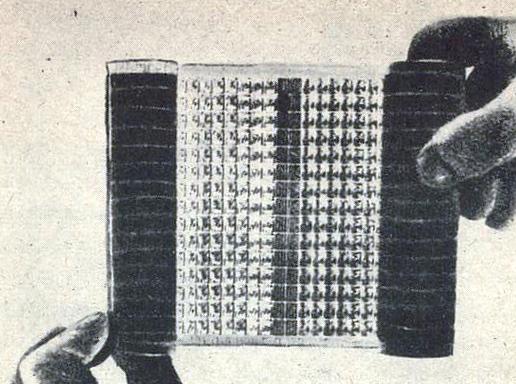
Projecting an image onto a surface of transparent curtain or light wall was known already in the times of ancient Babylon and Egypt. However, the principle behind presenting motion pictures hails from a much later period.
The fundamental step in the history of recording came with the understanding of how an optical darkroom works, known as camera obscura. The principle consisted in casting strong light on an object situated in front of a wall with a small hole. On the opposite wall, in a dark room, one could observe the real and the reversed image. Building an optical darkroom was one of the activities of Leonardo da Vinci, among others, in whose diaries we can find notes related to his ideas for improving his invention. However, we owe the precise description of its functioning to Giovanni della Porta, whose conclusions were “published” in 1553.
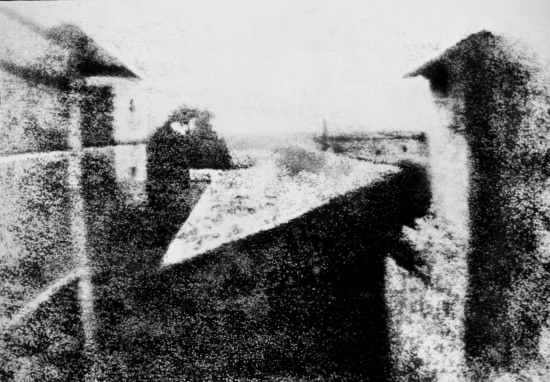
| View from the Window at Le Gras (La cour du domaine du Gras), Joseph Niépce (1826r.) - first, known photo with a camera obscura |
The development of optics and the studies on the application of lenses provided for building a device for projecting images – magic lantern. It is said to have been invented by the German monk Athanasius Kircher, who was the first to describe its operating principle in 1646. It was Belgian Gaspard Robertson who achieved mastery at operating the magic lantern; in the late 18th century, he organized shows in Paris known as fantasmagorie. The upgraded device was situated on a mobile cart, and the lens could change its position. Images were projected onto rippling curtains or clouds of thick smoke. Magic lantern has been preserved until our times in the form of a projector. The attempts at breathing life into images led to the experiments with projections from two or more devices.
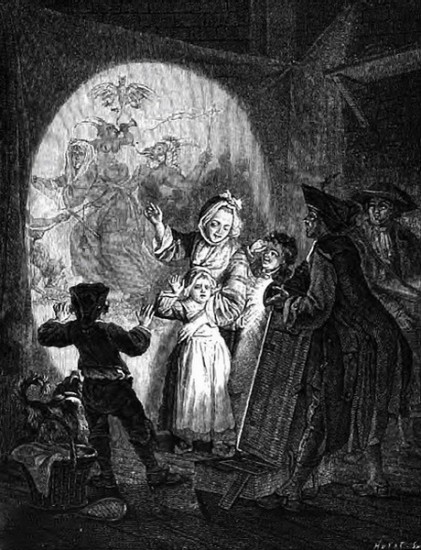 |
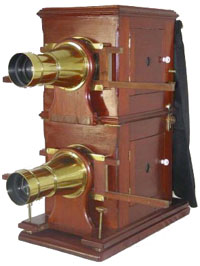 |
||||||||||
| fantasmagorie | magic lantern |
||||||||||
One of the examples of an attempt at solving the problem of the immobility of the image was the taumatrop, invented in 1826 by John Paris. The invention provided for the impression of variation through a quick rotation of a disc a string, which had drawings on the sides. During the rotation, the observer could see two overlapping images at a time. However, we owe the formulation of the theory of visual sensations to Joseph A. Plateau, who in 1829 analysed the course of the above mentioned phenomenon.
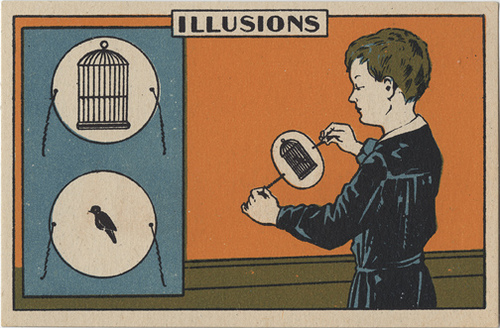 |
| From: http://www.flickr.com/photos/20939975@N04/2442815137/in/photostream/ |
Independently of the above inventions, in 1830 Michael Faraday built the first stroboscope (blend of two Greek words movement and see). The device consisted of cardboard shield with cuttings between which drawings were located that presented a figure in the consecutive phases of movement. It was the first device in history to produce an artificial sensation of movement.
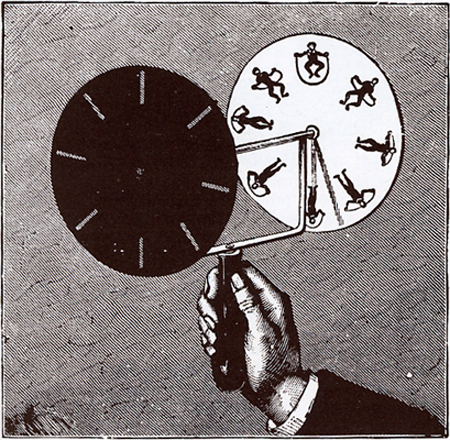 |
|
| praksinoscop, from: http://impresssnow.com/349/349_lecture04.html |
Of the devices based on stroboscope, it is worth enumerating zootrop or zoetrop (circle of life), in the upper part of whose roller there were vertical slots, and in the bottom part there were drawings made on the inner side. Looking through the slot, and with a simultaneous movement of the roller, one could see an animated scene.
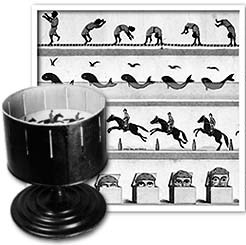 |
| zootrop - from: http://www.museumoflondon.org.uk/ |
All these devices based on the motion of images had a serious fault which was the limited number of spectators. This problem was solved for the first time by Emil Reynaud, who merged his earlier invention with the operating principle of magic lantern. Instead of paper stock, he situated a range of slides on the external side of the roller. Light cast from the lamp went through the slide, projecting the image through a set of lenses onto the screen. Thus, it was the first time that people had been able to acquire a light motion picture projected in magnification.
We also owe the first cinema to Reynaud, who in 1888 presented his Optical Theatre. The inventor used transparent stock on which he had painted 700 images. The device, which was extremely effort-consuming, was superseded by more mechanical techniques that enabled recording the image.
One of the first photographers to deal with the movement of living creatures was Eadweard Muybridge. Willing to preserve the photographic image of a running horse, he placed a range of photographic cameras along the track. It was very expensive and onerous a method. Yet, the issue he tackled ushered in subsequent inventions, among others, Marey’s photographic rifle, prototype of a film camera. The rifle provided for fixing particular phases of an object’s movement on a circuit of a glass plate of a shield-like or polygonal shape. The plate rotated in a step movement, stopping to take a photograph. Marey upgraded this idea in the later chronophotograph, in which the glass plate was replaced with photosensitive paper stock, moving in front of the lens and stopping for the time of exposure. Chronophotograph was used to analyse movement.
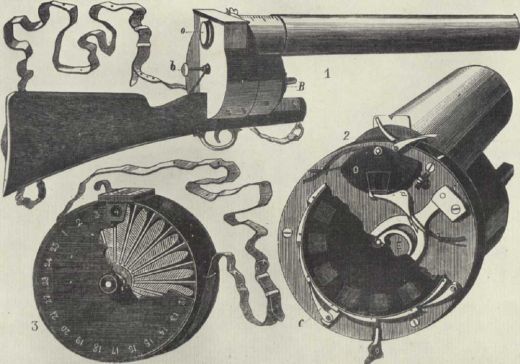 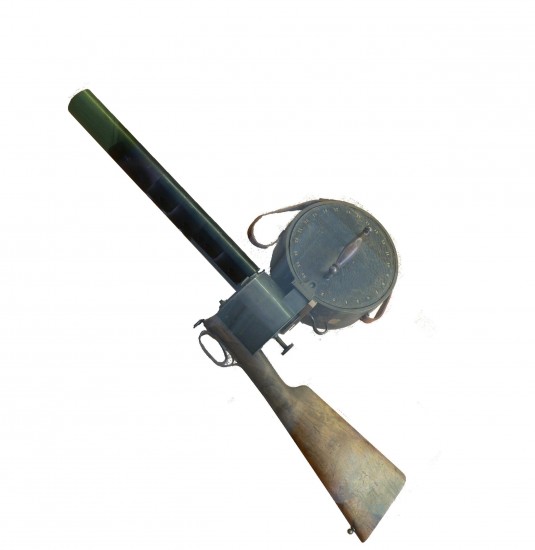 |
| From: http://impresssnow.com/349/349_lecture04.html |
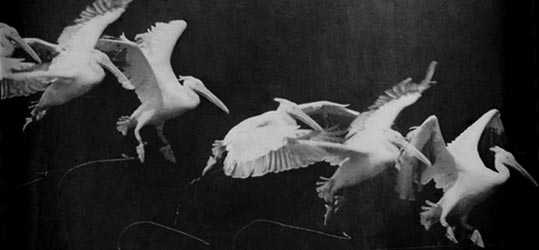 |
| flying pelican, Étienne-Jules Marey, 1882r. |
The above technical achievements served one purpose – preserving the consecutive phases of movement. However, cinematography was looking forward to reversing the situation, i.e. an attempt at re-enacting the phases of movement. During the studies on this issue, photography began to be increasingly widely used. It was already in the 1850s that the Czech inventor Jan E. Purkynie replaced drawings of his own stroboscope with photographs, making an attempt at a projection combined with magic lantern.
The same time saw the creation of the important device by Thomas Edison – kinetoscope. It was a case equipped with magnifying glass, through which one looked at the film stock in monotonous movement, lit with a light bulb from below in an interrupted manner. As a result one could see photographic images in motion. The drawback of the invention consisted in the fact that it could be used only by one person at a time. Image sharpness was achieved owing to high frequency of projecting, ca. 40 frames a second. Kinetoscope offered the possibility of watching short, only half-minute scenes.
Studies on recording movement were carried out also on the Polish territory. The first manufacture of photosensitive materials in the Polish territory was founded by Piotr Lebiedziński. One of the most renowned inventors at the time was Kazimierz Prószyński, who made a name for himself building a device called pleograph.
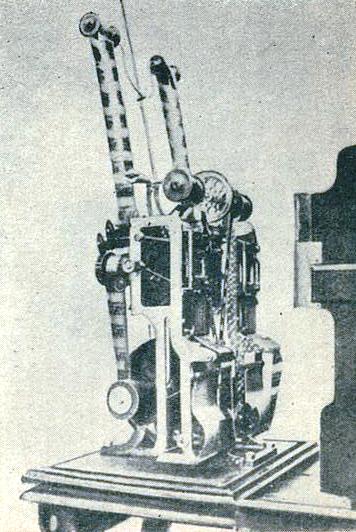 fot.1 |
|
|
phot.1 Upgraded bio-pleograph by Kazimierz Prószyński. phot. 2 Fragment of one of the first films by Kazimierz Prószyński, made with the use of pleograph in the years 1894 – 1898, presenting the skating rink of the Polish Ice-skating Society. phot. 3 Positive film stock of the camera “Oko” [“Eye”]. |
However, we owe the merit of developing the invention into its applied form and vesting it with a popular character to Lumière brothers.
The 13th of February 1895 saw granting the patent for:
“an apparatus serving the purpose of acquiring and watching chronophotographic photos, in which the film for acquiring images or containing such photos is shifted in an interrupted movement, characterised by the periods of repose, by means of claws or pins entering the holes located on the edges of the film. It means that the film stops or projects subsequent photos through a small window, alternately veiled or unveiled with a shield with a cut out pattern, serving as a shutter and unveiling the window the moment the film reposes.”
Cinematograph was presented on the 22nd of March 1895 at the Society for the Development of the National Industry in Paris. The screened film was Workers Leaving the Factory. After several demonstration shows, the 28th of December 1895 saw the first paid screening in the underground section of Grand Cafe, in Boulevard des Capucines in Paris. This date came to be known as the date birth of cinematography.
Initially, cinematograph was treated as a transitory fashion. Due to the lack of proper light sources and low sensitivity of the negative film, photos were shot only at daylight. First ateliers were located in Southern France, at the French Riviera. Photos of the interiors were taken in the open air, hence the wind-induced movement of the curtains sometimes to be seen in a “closed room”, which couldn’t be avoided in such conditions.
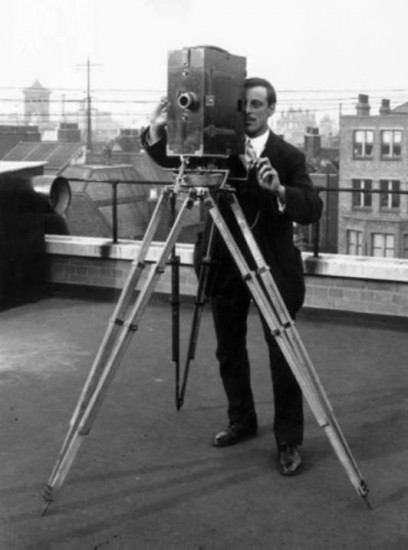 |
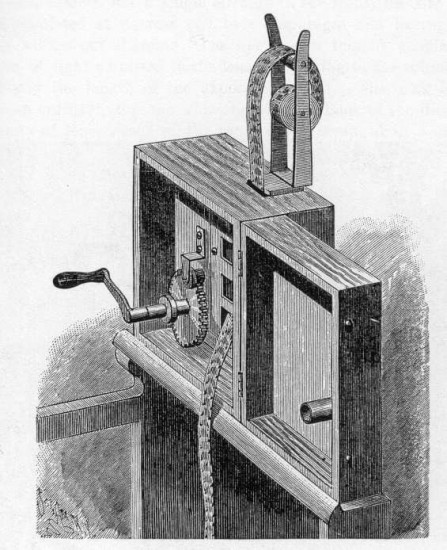 |
| from: http://impresssnow.com/349/349_lecture04.html |
The beginning of the cinema were anything but easy, Screening devices were very primitive and noisy. Viewers left the screening after several minutes bleary-eyed. Besides the certain mistrust on the part of the audience, with which all technical novelties usually meet, it was also tragic fires stemming from the inflammability of the film stock that contributed to discouraging the viewers. Despite difficulties, cinematography was slowly perfected gaining crowds of devoted spectators.












